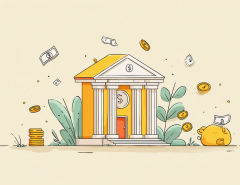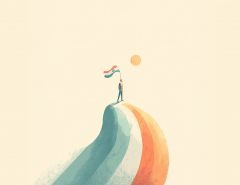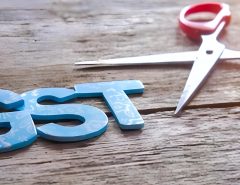For 1.3 billion Indians, life under the lockdown has been significantly different from the pre-COVID days. As the brick-and-mortar stores shut down, consumers switched to digital platforms. However, e-commerce companies including mobility aggregators and hyperlocal delivery platforms are facing difficulties in fulfilling orders on account of various on-the-ground challenges and supply chain breakdowns. This, in turn, has disproportionately affected Persons with Disabilities (PwD) who have been relying on digital platforms for independent living.
Pooja Arora (name changed) is a young professional who lives with blindness. She works with a reputed MNC in Delhi-NCR and uses specialised softwares to operate her smartphone and computer. For daily essentials, Pooja relied on an e-grocery app which was accessible (usable) with her software. However, when the company experienced breakdowns during the lockdown, she struggled to get milk and fresh produce. Unfortunately, other similar apps and websites were inaccessible (unusable) with her software. Furthermore, as a young disabled woman, finding a local grocery shop which was open and stocked the required goods was challenging and potentially unsafe, explains Pooja.
As per Census 2011, India is home to 26.81 million Persons with Disabilities representing 2.21% of the country’s population. However, experts challenge the above figures citing the United Nations’ global disability rate of 15% of population. Based on the global rates, a rough estimation would peg the total number of PwD in India at around 180 million.
International studies have demonstrated that 80% of disabilities are acquired between the working-age of 18-64 years. Moreover, the incidence of disability rises with population growth, increasing life expectancy, and medical advancements. Additionally, doctors are hinting that many Covid-19 survivors may have to live with long term physical and mental health conditions including respiratory illnesses and cognitive impairment. Thus, ‘living with a disability’ is something which many of us may have to experience directly or indirectly in our lifetime.
Contrary to popular perception, many Persons with Disabilities are gainfully employed, pay taxes and add value to the economy. They routinely use technology such as screen readers and magnifiers, hearing aids, manual or mechanised wheelchairs, specialised computer input/output devices and other assistive tools to live a productive life. However, these tools are developed assuming that certain prerequisites are in place. For instance, Pooja’s softwares were developed assuming that the apps and websites, such as the e-grocery app, would follow international guidelines for accessibility. These guidelines are called the Web Content Accessibility Guidelines (WCAG).
Today, as the world fights the COVID-19 pandemic, every product, service, system and operating procedure is being re-examined and redefined. Consumers are fast abandoning old habits and adopting new technologies including online shopping, digital payments, online education, and so on… In doing so, we all are laying the foundation for the future.
The opportunity before us is to keep universal accessibility and inclusion front and centre as new products, services, systems and operating processes are developed. Today, on the Global Accessibility Awareness Day, let’s take on #UniversalAccessibility as the mantra for building platforms for the post-COVID world. This means, when a supermarket chain builds an online platform to sell groceries, a user with visual disability such as Pooja should be able to use it. When a mobile or computer OEM builds a digital platform for their after-sales service and tech support, it should have the capacity to serve a paraplegic user. When a school or college takes its program online, it should be able to support a deaf student.
According to the World Bank, accessibility improvements account for a mere 1% of the project cost when factored in right from the planning and design stage. It opens up the product/service to a wider market. Furthermore, these improvements (example: dark mode and closed captions) enhance the experience of even non-disabled individuals increasing their willingness to pay.
Here are a few steps which organisations could take to enable #UniversalAccessibility for digital platforms:
- Commit to universal accessibility as a key performance indicator right from the planning and design stage
- Conduct digital accessibility training for organisation’s leadership, product managers and engineers
- Integrate accessibility testing in the Quality Assurance (QA) and user acceptance testing (UAT) process
- Engage with Persons with Disabilities to discover user needs and get user feedback
- Make continuous accessibility improvements an integral part of the product roadmap
When Prime Minister Mr Narendra Modi presented his vision for an Atma-nirbhar Bharat (self-reliant India), he identified technology and demographic dividend as two of the five pillars. Achieving this vision wouldn’t be possible without utilising all our resources. The International Labour Organization estimates the cost of excluding Persons with Disabilities to be as high as 7% of GDP (more than 2/3rd of the stimulus package). Thus, when India works to leverage technology and demographic dividend to thrive in the post-COVID world, #UniversalAccessibility is a mantra the country cannot afford to ignore. Today, on the Global Accessibility Awareness Day, by committing to #UniversalAccessibility, let’s reaffirm India’s commitment to sabka saath, sabka vikas and sabka vishwas (together with all, development for all and trust of all).
The author is Member, FICCI Diversity & Inclusion Task Force and Associate Director, Ola Mobility Institute





